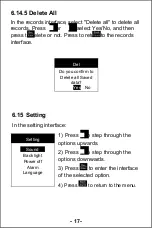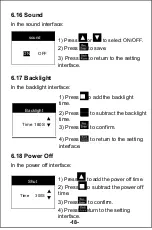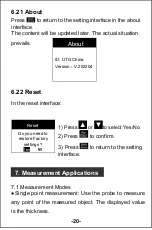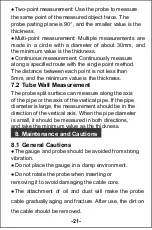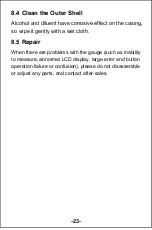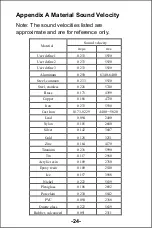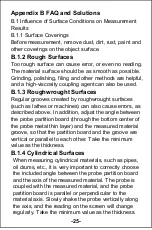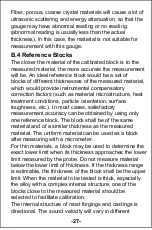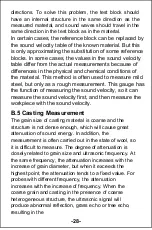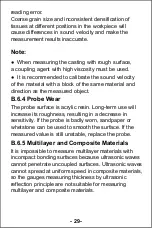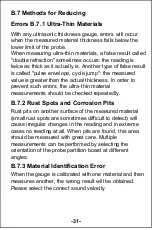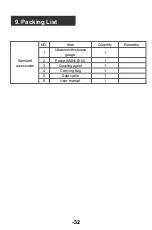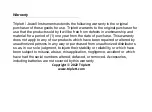
directions. To solve this problem, the test block should
have an internal structure in the same direction as the
measured material, and sound waves should travel in the
same direction in the test block as in the material.
In certain cases, the reference block can be replaced by
the sound velocity table of the known material. But this
is only approximating the substitution of some reference
blocks. In some cases, the values in the sound velocity
table differ from the actual measurements because of
differences in the physical and chemical conditions of
the material. This method is often used to measure mild
steel, but only as a rough measurement. This gauge has
the function of measuring the sound velocity, so it can
measure the sound velocity first, and then measure the
workpiece with the sound velocity.
B.5 Casting Measurement
The grain size of casting material is coarse and the
structure is not dense enough, which will cause great
attenuation of sound energy. In addition, the
measurement is often carried out in the state of wool, so
it is difficult to measure. The degree of attenuation is
closely related to grain size and ultrasonic frequency. At
the same frequency, the attenuation increases with the
increase of grain diameter, but when it exceeds the
highest point, the attenuation tends to a fixed value. For
probes with different frequency, the attenuation
increases with the increase of frequency. When the
coarse grain and casting in the presence of coarse
heterogeneous structure, the ultrasonic signal will
produce abnormal reflection, grass echo or tree echo,
resulting in the
-28-




